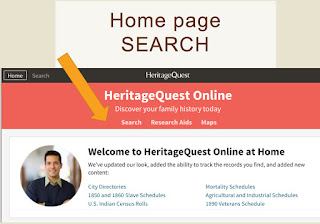Do you have old syllabus files from conferences you attended in past years? Here are 4 very good reasons to hold onto them and keep them handy. Note: Mine are all digital, taking up no room on my bookshelf and yet easy to find and review in a matter of moments.
Refresh Your Memory
Sometimes I can't absorb all the key points from a session even with the handout in front of me. This is especially true for topics that are new to me or techniques I use only very occasionally.
For instance, Pamela J. Cooper's "Railroad Trilogy" session at the 2013 FGS conference got me started researching my husband's ancestors who worked on the railroad. She had so many great ideas! I've returned to her handout in the syllabus more than once to remind myself of occupational words (like gandy dancer) that suggest a railroad background, and for how to obtain employee and pension records.
In 2014, I attended Maureen Taylor's NGS session about "Photo Detecting 101" and got educated on the basics of photo identification. Her handy chart comparing the daguerreotype, the ambrotype, the tintype, and cartes des visite has been such a treasure as I sort my family's old photos for dating and captioning. I refresh my memory on the differences as often as needed.
Less Relevant Then, More Relevant Now
In 2013, I had no idea I would find so many ancestors in my husband's family tree who worked for railroads. Back then, I was thinking primarily about the background of my husband's grandfather (Brice Larimer McClure), who worked as a machinist for the "Big Four" railroads in Wabash, Indiana at the turn of the 20th century.
Since that conference, I've discovered some of hubby's ancestors were station agents ... some were railroad machinists ... and on and on. Having the syllabus available with a few clicks allows me to return to Pam's handout and see it with fresh eyes, getting more out of it because I know more about family history than I did back then. In short, the session is even more relevant to my genealogy research today than in the past.
Sources, Techniques, and Tips Are Timeless
Nearly all of the info in my syllabus files (even the oldest, from 2013 and 2014) has stood the test of time, particularly methodology and tips. The basics are sound and remain valuable. The syllabus files provide quite an education and allow me to expand my knowledge well beyond the sessions I attended.
Some speakers included web addresses in their handouts. A few led to "404 Not Found" but the vast majority are still working and still helpful. In fact, some of the links led to pages that are being updated on a regular basis. I was delighted to see that Pam's link to Jim Sponholz's page on "Locations of Railroad Genealogical Materials" was very much alive--Jim updated it just a few weeks ago!
Talk about timeless: I should put Maureen Taylor's "Photo Detecting 101" handout from NGS 2014 on speed dial. Having connected with more cousins in recent years, I refer to her tips and techniques often as I investigate each new family photo.
Ideas and Inspiration from Old Syllabus Files
Like browsing a library's shelves in search of a good book to read, clicking through old syllabus files can lead to fresh ideas and inspiration. Just now, I was clicking through the 2014 NGS syllabus and stopped at the handout for Elizabeth Shown Mills's session "War Is Hell." She not only suggested a strategy for researching military claims made by ancestors, she included a detailed list of sources to check for claims related to each war or conflict. This is an angle I didn't even consider when examining hubby's Civil War ancestors, but now will try to investigate.
Old syllabus files are the gift that keeps on giving, year after year. If you haven't opened one lately, find a quiet moment to take another look. You're sure to notice something you can use in your current genealogical situation!








